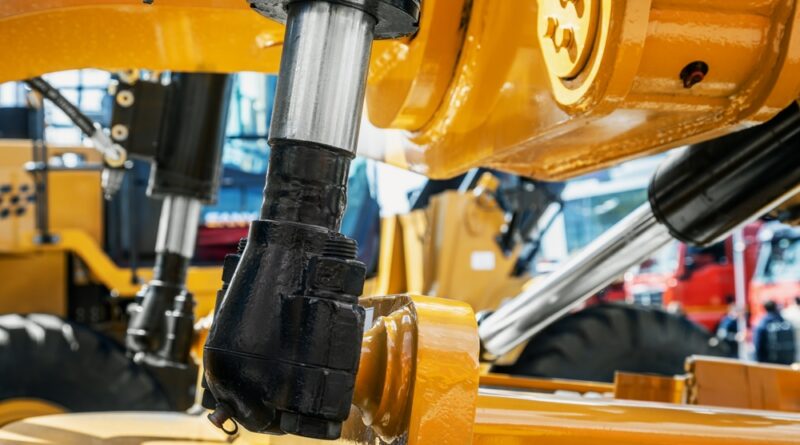The Future of Hydraulic Lift: Emerging Trends in Automation and Remote Operation
Introduction
The hydraulic lift has long been a fundamental component in various industries, from automotive repair shops to multi-story buildings and industrial warehouses. Over the years, technological advancements have transformed traditional hydraulic lifts, integrating automation and remote control features to enhance efficiency, safety, and convenience. As industries continue to evolve, so does the demand for more intelligent, user-friendly lifting solutions.
This article explores the future of hydraulic lift, focusing on emerging trends in automation and remote control, the benefits these innovations bring, and the challenges that must be addressed to ensure widespread adoption.
The Evolution of Hydraulic Lifts
Hydraulic lifts have been widely used due to their ability to generate immense lifting power with minimal mechanical complexity. The traditional hydraulic lift operates using a pressurized fluid system that moves a piston, lifting the load. While this basic principle remains unchanged, advancements in automation and digital technology are redefining hydraulic lift functionalities.
Earlier hydraulic lifts required manual operation, demanding physical effort and close supervision. Today, automated hydraulic lifts allow users to control lifting operations with greater precision using digital interfaces, IoT (Internet of Things) connectivity, and even mobile applications.
Key Trends in Automation and Remote Control for Hydraulic Lifts
1. IoT-Enabled Smart Hydraulic Lifts
The Internet of Things (IoT) is one of the most significant trends shaping the future of hydraulic lifts. IoT connectivity allows hydraulic lift systems to communicate with cloud-based platforms and smart control units, enabling:
- Real-time data monitoring on load capacity, pressure levels, and fluid status
- Predictive maintenance using AI-driven analytics to prevent breakdowns
- Automated alerts and diagnostics sent to operators via mobile apps or cloud dashboards
This connectivity reduces downtime and improves operational efficiency by ensuring lifts remain in optimal working condition.
2. Remote Control and Mobile App Integration
With advancements in wireless technology, modern hydraulic lifts are now equipped with remote control features. Operators can control lifts via:
- Mobile applications with intuitive user interfaces
- Wireless handheld remotes for easy operation in industrial settings
- Voice-activated commands for hands-free convenience
Remote-controlled hydraulic lifts enhance safety, particularly in hazardous environments where proximity to heavy machinery poses risks. For instance, technicians in automotive workshops can raise or lower a vehicle using a mobile app without physically being next to the lift.
3. AI-Driven Automation for Efficiency
Artificial Intelligence (AI) is playing a crucial role in optimizing hydraulic lift operations. AI-powered systems enable:
- Automated height adjustments based on pre-programmed lifting requirements
- Load balancing algorithms to prevent uneven weight distribution
- Self-diagnosing mechanisms to identify and resolve mechanical issues
With AI integration, hydraulic lifts can self-optimize for different lifting tasks, improving overall efficiency in industrial applications.
4. Energy-Efficient Hydraulic Lift Systems
Sustainability is a growing concern in various industries, and hydraulic lifts are no exception. Innovations in energy-efficient hydraulic systems include:
- Regenerative hydraulic technology, which recaptures energy lost during lifting and lowering cycles
- Low-viscosity hydraulic fluids that reduce friction and energy consumption
- Smart power management systems that adjust power usage based on load demands
These advancements not only reduce energy costs but also minimize the environmental impact of hydraulic lift operations.
5. Integration with Robotics and Automation Systems
Industries such as manufacturing, warehousing, and logistics are integrating hydraulic lifts with robotic systems. This automation allows:
- Fully autonomous material handling in warehouses
- Seamless integration with conveyor belts and robotic arms
- AI-coordinated movement between multiple hydraulic lifts for synchronized lifting
By incorporating robotics, hydraulic lifts can operate with minimal human intervention, improving productivity in high-demand environments.
6. Cloud-Based Maintenance and Support Services
Many companies are moving toward cloud-based service platforms that provide:
- Remote diagnostics and troubleshooting for hydraulic lifts
- Automated software updates for lift control systems
- Historical data analysis to optimize lift performance
This trend is especially beneficial for large industries where multiple hydraulic lifts are in operation, allowing centralized monitoring and management.
Benefits of Automation and Remote Control in Hydraulic Lifts
1. Enhanced Safety
Automated hydraulic lifts reduce human error, leading to fewer workplace accidents. Remote-controlled lifts eliminate the need for workers to be in close proximity to heavy machinery, minimizing injury risks.
2. Increased Efficiency and Productivity
With automated height adjustments and predictive maintenance, hydraulic lifts can operate with minimal downtime, ensuring continuous workflow in industrial settings.
3. Cost Savings
Remote monitoring and predictive maintenance help prevent unexpected failures, reducing costly repairs and replacements. Energy-efficient designs lower power consumption, further cutting operational expenses.
4. Improved User Convenience
Smart controls, mobile applications, and AI-assisted automation make hydraulic lifts easier to operate, even for users with minimal technical expertise.
Challenges in Adopting Automated Hydraulic Lifts
Despite the numerous advantages, several challenges must be addressed before automated and remote-controlled hydraulic lifts can become industry standards.
1. High Initial Investment Costs
Implementing smart hydraulic lift technology requires investment in:
- IoT sensors and cloud infrastructure
- AI-powered automation software
- Remote control systems and mobile applications
While these technologies lead to long-term savings, the high upfront costs can be a barrier for small businesses.
2. Cybersecurity Concerns
As hydraulic lifts become more connected, they become vulnerable to cyber threats. Ensuring strong encryption and cybersecurity protocols is crucial to prevent hacking or unauthorized access.
3. Maintenance of Advanced Systems
Automated hydraulic lifts require specialized technical knowledge for maintenance and troubleshooting. Training technicians to handle AI-driven diagnostics and IoT connectivity can be challenging.
The Future Outlook for Hydraulic Lifts
Looking ahead, the evolution of hydraulic lifts will continue to be driven by:
- Advancements in AI and machine learning, allowing self-adjusting lift systems
- Greater IoT integration, providing real-time performance insights
- Expanded use of renewable energy, reducing dependency on traditional power sources
- Collaborations with automation and robotics industries, leading to fully autonomous lifting solutions
As technology continues to advance, hydraulic lifts will become smarter, safer, and more efficient, redefining their role in industrial and commercial applications.
Conclusion
The future of hydraulic lifts is undeniably intertwined with automation and remote control innovations. From IoT connectivity and AI-driven automation to mobile app integration and energy-efficient designs, hydraulic lifts are undergoing a transformation that enhances efficiency, safety, and user convenience.
While challenges such as high costs and cybersecurity risks remain, the long-term benefits make automated hydraulic lifts a promising investment for various industries. As technology evolves, we can expect even smarter and more efficient lifting solutions that meet the growing demands of modern industries.



